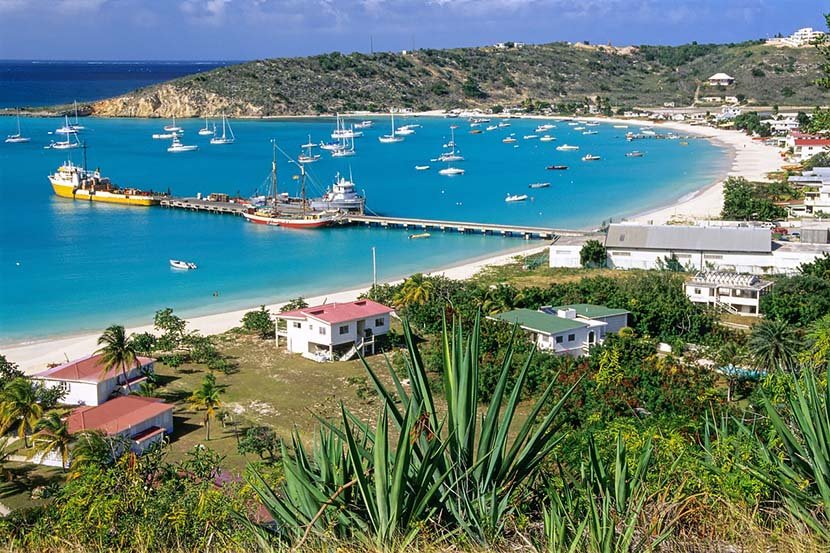Monday, June 24, 2024
Reading Time: 6 minutes

Croatia presents a diverse array of experiences for every traveler. Whether you’re delving into ancient customs, indulging in local cuisine, or connecting with nature, experiential tourism in Croatia promises endless opportunities for remarkable adventures. Croatia, allows visa free access to 90 countries is a jewel situated on the Adriatic Sea, is where history and culture intertwine within breathtaking natural surroundings.
Visa-Free Travel to Croatia: List of Eligible Countries for 2024 :
As of 2024, regular passport holders from 90 countries visiting Croatia for tourism purposes do not require a visa and will be granted permission for a short-term stay upon arrival. These countries include Albania, Andorra, Antigua and Barbuda, Argentina, Australia, Austria, Bahamas, Barbados, Belgium, Bosnia and Herzegovina, Brazil, Brunei, Bulgaria, Canada, Chile, Colombia, Costa Rica, Cyprus, Czech Republic, Denmark, Dominica, Timor-Leste, El Salvador, Estonia, Fiji, Finland, France, Georgia, Germany, Greece, Grenada, Guatemala, Honduras, Hungary, Iceland, Ireland, Israel, Italy, Japan, Kiribati, Latvia, Liechtenstein, Lithuania, Luxembourg, North Macedonia, Malaysia, Malta, Marshall Islands, Mauritius, Mexico, Micronesia, Moldova, Monaco, Montenegro, Netherlands, New Zealand, Nicaragua, Norway, Palau, Panama, Paraguay, Peru, Poland, Portugal, Romania, Saint Kitts and Nevis, Saint Lucia, Saint Vincent and the Grenadines, Samoa, San Marino, Serbia, Seychelles, Singapore, Slovakia, Slovenia, Solomon Islands, South Korea, Spain, Sweden, Switzerland, Tonga, Trinidad and Tobago, Tuvalu, Ukraine, United Arab Emirates, United Kingdom, United States, Uruguay, Vanuatu, and Venezuela.
Data on Tourist Arrivals
Croatia’s tourist arrivals data recorded 0.5366 million visitors in March 2024, an increase from 0.31245 million in February 2024. The data is updated monthly, averaging 488,212 visitors from November 1999 to March 2024, with 293 observations. The number of international tourist arrivals in Croatia is forecasted to continuously increase between 2024 and 2029, totaling seven million additional arrivals (+13.22 percent). The arrivals are estimated to amount to 59.96 million by 2029.
This data, depicting the number of inbound international tourists, refers to tourists traveling to a country which is not their usual residence, for purposes other than work, and for stays not exceeding 12 months. The forecast has been adjusted for the expected impact of COVID-19. The shown data are an excerpt of Statista’s Key Market Indicators (KMI), a collection of primary and secondary indicators on the macro-economic, demographic, and technological environment in more than 150 countries and regions worldwide.
Croatia’s Beach Tourism Boom: A 2022 Snapshot
In 2022, Croatia cemented its status as a top beach vacation destination in Europe, drawing in almost 46 million tourists. Germany led the influx with around 3.3 million visitors, followed by Austria and Slovenia, contributing 1.4 million and 1 million visitors, respectively.
Economic Impact of Tourism in Croatia
Tourism plays a crucial role in Croatia’s economy, contributing nearly 19 percent to the country’s GDP in 2023, a figure still recovering from pre-pandemic levels. Projections indicate this share will rise, potentially exceeding 26 percent by 2028.
Best Hotels in Croatia:
- Lopuld1483
- Villa Dubrovnik Hotel
- Royal Princess Hotel
- Villa Nai 3.3
- Vestibul Palace Hotel
- Hilton Imperial Dubrovnik
The Coastline and Islands
The nation’s coastline glistens with over a thousand islands, each possessing its own distinctive allure. These islands offer serene beaches, vibrant marine life, and picturesque villages that make for a perfect getaway.
Inland Treasures
Inland areas feature hilltop villages and the dynamic capital, Zagreb, renowned for its Austro-Hungarian architecture and youthful vibrancy. Zagreb combines historical charm with modern energy, making it a must-visit destination.
Ease of Travel
The adoption of the euro as the national currency simplifies transactions for tourists, enhancing the ease and comfort of their visit. With a reputation for safety and a relaxed tipping culture, exploring Croatia becomes an even more pleasant experience.
Croatia’s Popularity Among Germans
Croatia, often dubbed the “Riviera of Eastern Europe,” is set to become one of the top five foreign destinations for Germans in 2024, according to a survey conducted by the German FUR institute. This announcement was made by the Croatian National Tourist Board (HTZ) during Croatia’s participation in the ongoing CMT travel fair in Stuttgart.
Showcase at the CMT Travel Fair
The HTZ, along with 16 companies and travel boards, is showcasing Croatia’s offerings at the fair, held from January 13 to 21. Although Croatia raised its tourist tax in 2019, the higher rate only applies during the peak summer season, amounting to around 10 kuna (€1.33) per person per night.
The Rise of Experiential Tourism
As the travel landscape continues to evolve, experiential tourism has become a leading trend, providing travelers with immersive and authentic experiences that go beyond traditional tourist attractions. In the post-pandemic world, travelers seek meaningful connections with destinations, cultures, and people. In Croatia, experiential tourism has taken the spotlight, captivating visitors with its rich heritage, stunning landscapes, and vibrant communities.
Embracing Local Culture
Experiential tourism in Croatia revolves around embracing the local culture in its truest form. Travelers are no longer content with merely visiting landmarks; they crave opportunities to engage with local traditions, artisans, and communities. From participating in traditional olive harvests in Istria to learning the art of stone carving in Dalmatia, visitors can immerse themselves in hands-on experiences that offer insight into Croatia’s cultural heritage.
Culinary Adventures
Croatian cuisine is a reflection of its diverse landscapes and cultural influences, making it a highlight of experiential tourism. Travelers can embark on culinary adventures, exploring local markets, sampling regional delicacies, and learning traditional cooking techniques from skilled chefs. From truffle hunting in Istria to wine tasting and savoring oysters on Pelješac, food enthusiasts can enjoy the flavors of Croatia while gaining a deeper understanding of its culinary traditions.
Connecting with Nature
With its pristine coastlines, lush forests, and majestic mountains, Croatia offers a paradise for nature lovers. Experiential tourism allows travelers to connect with nature in meaningful ways, whether it’s hiking through national parks, kayaking along secluded coves, or stargazing in remote villages. Sustainable eco-lodges and agrotourism farms provide eco-conscious travelers with the opportunity to immerse themselves in nature while minimizing their environmental footprint.
Supporting Sustainable Initiatives
As travelers become more conscious of their environmental and social impact, sustainable tourism initiatives are gaining momentum in Croatia. From eco-friendly accommodations to community-based tourism projects, there are countless opportunities for travelers to support initiatives that promote conservation, cultural preservation, and local empowerment. By choosing responsible tour operators and practicing mindful travel habits, visitors can contribute to the preservation of Croatia’s natural and cultural heritage.
Off-the-Beaten-Path Adventures
Experiential tourism in Croatia beckons travelers to stray from the well-trodden routes and explore lesser-known treasures away from the typical tourist spots. From delving into the mysteries of abandoned villages to discovering secluded waterfalls tucked away in lush forests, adventurous souls can embark on journeys that unveil Croatia’s lesser-explored wonders. Whether it’s unraveling the stories of forgotten communities or setting sail to remote islands in the Kornati archipelago, travelers can delve into off-the-grid experiences with the guidance of local experts, creating memories that truly embody the essence of Croatia.
Must-Visit Destinations
Plitvice Lakes : The Plitvice Lakes are the oldest national park in Croatia and a UNESCO World Heritage site. Located in the eastern part of the Lika region, this unique geological area features 16 interconnected lakes linked by streams and waterfalls. The natural beauty and serene ambiance make it a must-visit destination.
Dubrovnik : Dubrovnik is one of the most beautiful cities in Croatia, consistently ranked among the top five Mediterranean destinations by numerous publications. This stunning city boasts a rich cultural and historical heritage. Its well-preserved medieval core, imposing city walls, and picturesque seaside location create an almost unbelievably scenic setting.
Hvar : Hvar is a world-famous island known for its nearly record-setting sunshine in the Mediterranean. Like Dubrovnik, it is a posh and somewhat expensive destination. Hvar is easily accessible via several daily ferries from Brač and Split. The island’s coast is dotted with ancient towns, while the interior is filled with small villages producing lavender, olives, and wine for which Hvar is famed.
Zagreb : Zagreb, Croatia’s capital, offers a rich array of options for visitors, reflecting its residents’ recommendations. This elegant and grand old city has something for everyone, from historical landmarks to vibrant cultural scenes.
Istrian Coast : The Istrian coast’s splendid beaches are a natural magnet for travelers and outdoor enthusiasts. However, the region’s true heart lies in its central green hills, where you’ll find fairytale landscapes filled with vineyards, olive groves, and charming medieval towns, offering an off-the-beaten-path experience.
Bol and Zlatni Rat : Bol, located on the island of Brač, is famous for the iconic Zlatni Rat (Golden Horn) beach. This triangular promontory with powdery white sand surrounded by turquoise waters is so unique that it has become a symbol of Croatian tourism. The tip of the beach constantly changes shape due to the wind and sea, making each visit different. The southern beach hides many caves, coves, and cypress forests that stretch to the sea.
Krka National Park : Krka National Park is renowned for its seven magnificent waterfalls, with a total drop of 224 meters along the Krka River. Most visitors take a day trip to see the most famous fall, Skradinski buk, which is the final waterfall reachable via a half-hour boat ride from the town of Skradin.
Conclusion
In Croatia, travelers have the opportunity to embark on immersive journeys that deepen their connection to the destination and leave a positive impact on local communities and the environment. Whether you’re delving into ancient customs, indulging in local cuisine, or connecting with nature, Croatia offers boundless opportunities for extraordinary adventures, making it a must-visit destination for any traveler.





























